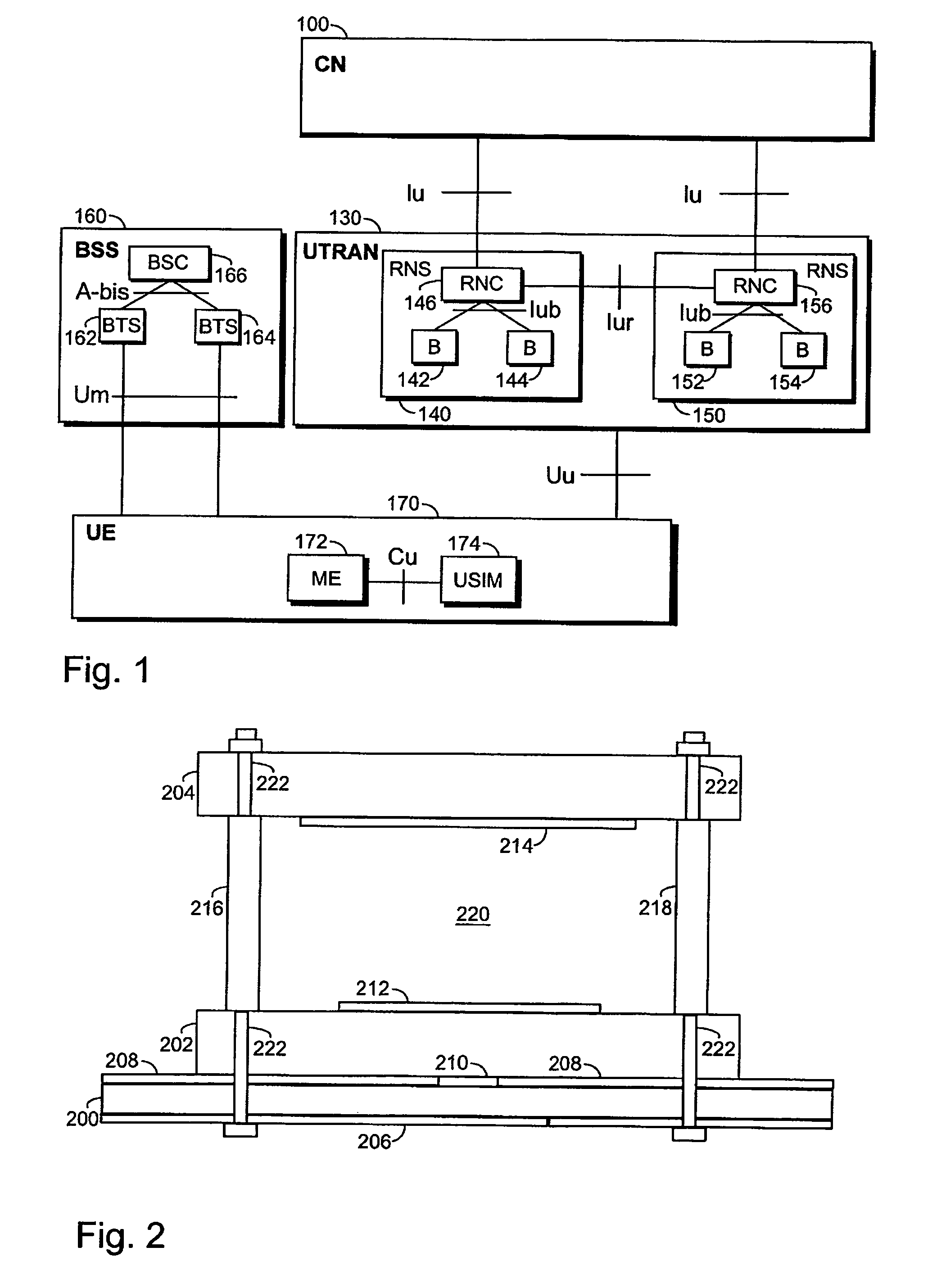Dual-polarized microstrip structure
a microstrip and patch antenna technology, applied in the direction of antenna earthings, substantially flat resonant elements, resonant antennas, etc., can solve the problems of high assembly cost due to manual labor, low sheet material cost, and mechanical complexity of most dual-polarized dipole antenna configurations, and achieve easy and cost-effective manufacturing, simple structure, and improved input matching
- Summary
- Abstract
- Description
- Claims
- Application Information
AI Technical Summary
Benefits of technology
Problems solved by technology
Method used
Image
Examples
Embodiment Construction
[0019]With reference to FIG. 1, examine an example of a radio system in which the preferred embodiments of the invention can be applied. A radio system in FIG. 1, known at least as UMTS (Universal Mobile Telecommunications System) and IMT-2000 (International Mobile Telecommunications 2000), represents the third-generation radio systems. The embodiments are, however, not restricted to these systems described by way of example, but a person skilled in the art can also apply the instructions to other radio systems containing corresponding characteristics.
[0020]FIG. 1 is a simplified block diagram, which shows the most important parts of a radio system and the interfaces between them at network-element level. The structure and functions of the network elements are not de-scribed in detail, because they are generally known.
[0021]The main parts of a radio system are a core network (CN) 100, a radio access network 130 and user equipment (UE) 170. The term UTRAN is short for UMTS Terrestria...
PUM
 Login to View More
Login to View More Abstract
Description
Claims
Application Information
 Login to View More
Login to View More - R&D
- Intellectual Property
- Life Sciences
- Materials
- Tech Scout
- Unparalleled Data Quality
- Higher Quality Content
- 60% Fewer Hallucinations
Browse by: Latest US Patents, China's latest patents, Technical Efficacy Thesaurus, Application Domain, Technology Topic, Popular Technical Reports.
© 2025 PatSnap. All rights reserved.Legal|Privacy policy|Modern Slavery Act Transparency Statement|Sitemap|About US| Contact US: help@patsnap.com



